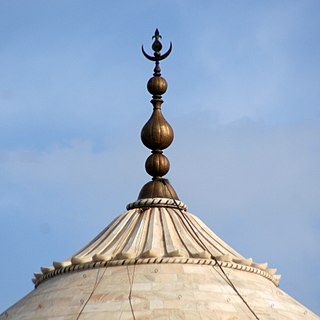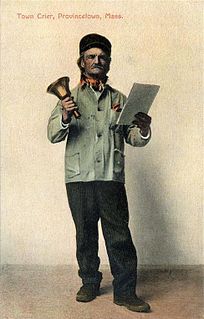
St Oswald's Church is in the village of Lower Peover, Cheshire, England. It is recorded in the National Heritage List for England as a designated Grade I listed building. It is an active Anglican parish church in the diocese of Chester, the archdeaconry of Macclesfield and the deanery of Knutsford. Its benefice is combined with that of St Lawrence, Over Peover.

St Edith's Church, Shocklach, stands at the end of an isolated lane running toward the River Dee about 1 mile (2 km) to the north of the village of Shocklach, Cheshire, England. It is a small Norman church, and is one of the oldest ecclesiastical buildings in Cheshire. The church is recorded in the National Heritage List for England as a designated Grade I listed building and its simple Norman work is considered to be unique in Cheshire. It is an active Anglican parish church in the diocese of Chester, the archdeaconry of Chester and the deanery of Malpas. Its benefice is combined with that of St Mary, Tilston.

St James' Church is in the village of Gawsworth, Cheshire, England, and is sited near Gawsworth Hall. It is recorded in the National Heritage List for England as a designated Grade I listed building. It is an active Anglican parish church in the diocese of Chester, the archdeaconry of Macclesfield and the deanery of Macclesfield. Clifton-Taylor includes it in his list of 'best' English parish churches. The authors of the Buildings of England series describe the church as being "pretty, but odd".

St Lawrence's Church, Over Peover is in an isolated position approached by a lane in the civil parish of Peover Superior. The only other buildings nearby are Peover Hall and a farm. It lies some 3 miles (5 km) south of the town of Knutsford. The church is recorded in the National Heritage List for England as a designated Grade I listed building. The church is an active Anglican parish church in the diocese of Chester, the archdeaconry of Macclesfield and the deanery of Knutsford. Its benefice is combined with that of St Oswald, Lower or Nether Peover. It is noted for its old chapels and for the monuments to the Mainwaring family.

St Helen's Church is in the village of Tarporley, Cheshire, England. It is an active Anglican parish church in the diocese of Chester, the archdeaconry of Chester and the deanery of Malpas. Its benefice is united with those of St John and Holy Cross, Cotebrook, St Thomas, Eaton, and St Paul, Utkinton. The church is recorded in the National Heritage List for England as a designated Grade II* listed building.

St Mary's Church stands in an isolated position to the south of the village of Tilston, Cheshire, England. The church is recorded in the National Heritage List for England as a designated Grade II* listed building. It is an active Anglicanparish church in the diocese of Chester, the archdeaconry of Chester, and the deanery of Malpas. Its benefice is combined with that of St Edith, Shocklach.

St Michael's Church is a redundant church standing on the corner of Bridge Street and Pepper Street in the city of Chester, Cheshire, England. It is recorded in the National Heritage List for England as a designated Grade II listed building. The former church is now used as a heritage centre.

St Michael and All Angels Church stands on Warhill overlooking the village of Mottram in Longdendale, Greater Manchester, England. The church is recorded in the National Heritage List for England as a designated Grade II* listed building. It is an active Anglican parish church in the diocese of Chester, the archdeaconry of Macclesfield and the deanery of Mottram.

The Blue Bell is at 63–65 Northgate Street, Chester, Cheshire, England. It is recorded in the National Heritage List for England as a designated Grade I listed building. Originally it consisted of two medieval houses which were joined together in the 18th century. The pavement runs through the ground floor storey of the northern part of the building, leaving a separate cabin or chamber between the pavement and the road.

1 Bridge Street, Chester, is located at the junction of Bridge Street and Eastgate Street at Chester Cross in the centre of the city of Chester, Cheshire, England. Its architecture is that of the black-and-white revival, it incorporates part of the Chester Rows, and is recorded in the National Heritage List for England as a designated Grade II* listed building. Because of its prominent position and its black-and-white architecture, the historian Simon Ward has described it as an "iconic" building.

Chester Cross is a junction of streets at the centre of the city of Chester, Cheshire, England.

1–11 and 13 Bath Street consists of a row of six attached cottages and a separate town house on the east side of Bath Street, Chester, Cheshire, England. Both the row of cottages and the house are recorded in the National Heritage List for England as designated Grade II listed buildings.

Billy Hobby's Well is in Grosvenor Park, Chester, Cheshire, England. Its canopy is recorded in the National Heritage List for England as a designated Grade II listed building.

All Hallows Church, Clixby, is a redundant Anglican church in the hamlet of Clixby, about 1 mile (1.6 km) east of the village of Grasby, Lincolnshire, England. It is recorded in the National Heritage List for England as a designated Grade II* listed building, and is under the care of the Churches Conservation Trust. The church stands to the north of the A1084 road between Caistor and Brigg.

St John and the Holy Cross Church is in Stable Lane, Cotebrook, Cheshire, England. It is an active Anglican church in the parish of Tarporley, the deanery of Malpas, the archdeaconry of Chester, and the diocese of Chester. It is a daughter church of St Helen, Tarporley with St Thomas, Eaton. The church is recorded in the National Heritage List for England as a designated Grade II listed building.

St Thomas' Church is in Church Lane in the village of Henbury, Cheshire, England. It is an active Anglican parish church in the deanery of Macclesfield, the archdeaconry of Macclesfield, and the diocese of Chester. The church is recorded in the National Heritage List for England as a designated Grade II listed building.

The Queen Victoria Monument stands in the centre of Hamilton Square, Birkenhead, Wirral, Merseyside, England. It is in the form of an Eleanor cross. The memorial was designed by Edmund Kirby, and was unveiled in 1905. It is recorded in the National Heritage List for England as a designated Grade II listed building.

The Monument to Captain John Francis Egerton stands in the grounds of the Oulton Estate, Little Budworth, Cheshire, England. John Francis Egerton died in 1846 as the result of injuries sustained in the First Anglo-Sikh War. The memorial was designed by Scott and Moffatt, and is recorded in the National Heritage List for England as a designated Grade II* listed building.

The Butter Cross in Dunster within the English county of Somerset is a Grade II* listed building and ancient monument. The cross was originally erected in the late 14th or early 15th century in the main street, and was moved to its current site in the late 18th or early 19th century. Although the head of the cross is missing, the shaft and socket stone are original. The cross is in the care of English Heritage and is managed by the National Trust.

Runcorn War Memorial was built to commemorate the servicemen of Runcorn lost in active service in the First World War. It was unveiled in 1920, and the names of those lost in the Second World War and subsequently were added later. The memorial stands in a small garden by a road junction in Runcorn, Cheshire, England, and consists of a Latin cross in white granite on a plinth and steps. Behind the cross is a wall containing plaques with inscriptions and the names of those who died. An inscribed stone has been added later with the names of those lost in subsequent conflicts. The war memorial is recorded in the National Heritage List for England as a designated Grade II listed building.































